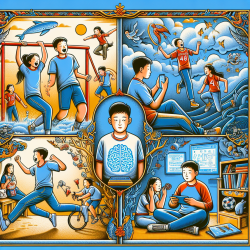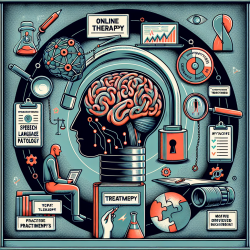As practitioners dedicated to supporting adolescent mental health, staying informed about the latest research is crucial. A recent study titled Combined Patterns Of Physical Activity And Screen-Related Sedentary Behavior Among Chinese Adolescents And Their Correlations With Depression, Anxiety And Self-Injurious Behaviors offers valuable insights into how physical activity (PA) and screen-based sedentary behavior (SSB) interact to affect mental health outcomes in adolescents.
The Study's Key Findings
The research conducted by Liu et al. involved 13,659 Chinese adolescents and identified four distinct patterns of PA and SSB:
- High MVPA/Low SSB: Adolescents engaging in high levels of moderate-to-vigorous physical activity (MVPA) with low screen time.
- Low MVPA/Low SSB: Adolescents with low levels of both MVPA and screen time.
- Low MVPA/High SSB: Adolescents with low physical activity but high screen time.
- Low MVPA/Moderate SSB: Adolescents with low physical activity and moderate screen time.
The study found that the high MVPA/low SSB group exhibited the healthiest psychological profiles, with lower levels of depression, anxiety, and self-injurious behaviors. Conversely, the low MVPA/high SSB group was at greater risk for these mental health issues, particularly among boys.
Implications for Practitioners
This research highlights the importance of promoting balanced lifestyles among adolescents. Here are some practical steps practitioners can take to apply these findings:
- Encourage Physical Activity: Advocate for daily physical activities that meet WHO recommendations. Collaborate with schools to integrate more physical education classes or after-school sports programs.
- Monitor Screen Time: Educate parents and adolescents about the potential mental health risks associated with excessive screen time. Encourage setting limits on recreational screen use.
- Create Supportive Environments: Foster environments that promote social interaction through group activities. These can enhance self-esteem and reduce anxiety.
- Gender-Specific Approaches: Recognize that boys may be more vulnerable to the negative effects of high screen time. Tailor interventions to address gender-specific needs.
The Path Forward: Further Research
The study underscores the need for further exploration into how cultural differences affect PA and SSB patterns. Practitioners are encouraged to engage in or support research efforts that delve deeper into these associations across diverse populations. Understanding these nuances can lead to more effective interventions tailored to specific demographic needs.
To read the original research paper, please follow this link: Combined Patterns Of Physical Activity And Screen-Related Sedentary Behavior Among Chinese Adolescents And Their Correlations With Depression, Anxiety And Self-Injurious Behaviors.










